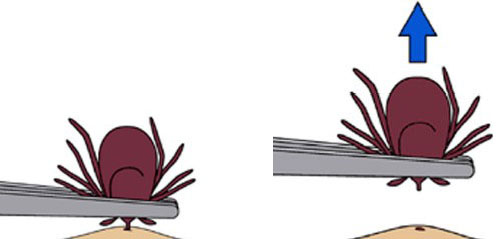Ticks live in several different habitat types and can be found throughout Delaware in forests, meadows and wetlands. They are also found in yards and residential areas. Ticks are active year-round if temperatures are above freezing.
When going into tick habitat, the DNREC Tick Program recommends taking basic precautions.
Wear tick repellent. If applying it directly to your skin, use a product that contains DEET, IR3535, or oil of lemon eucalyptus as the active ingredient. If applying to your clothing, use a product that contains permethrin as the active ingredient.
Wear long sleeves and long pants to make it harder for ticks to reach your skin. Wear boots and tuck your pant legs into your socks.
Wear light colors to make ticks easier to spot.
Stick to the center of trails, avoiding vegetation like tall grass where ticks might be waiting.
Conduct frequent, regular tick checks to remove ticks promptly. Ticks that are removed before they bite do not pose any health threat. Once they bite, ticks may transmit pathogens, but the sooner they are removed, the less likely they are to infect you. Some pathogens may be transmitted in as little as 15 minutes of attachment.

Remove the tick promptly. Use fine-tipped tweezers and grasp the tick as close as possible to the skin. Pull upward (away from your skin) slowly and steadily. Be careful not to twist or jerk the tick — the mouthparts may break off and remain embedded in the skin. If this happens, remove them with tweezers as you would remove a splinter.
After removing the tick, wash the bite area with rubbing alcohol or soap and water.
Check your body for more ticks. Where there is one tick, there may be others.
Identify the tick. Tick identification is important. Different tick species are associated with different health threats. Save the tick in a sealed plastic bag so the identification can be confirmed if needed.
Be vigilant for symptoms of tick-associated diseases. Signs and symptoms may include fever, rash, aches, and flu-like symptoms. If any symptoms develop, consult a medical professional.
Do NOT apply a match or lighter to the tick.
Do NOT coat the tick in alcohol, nail polish, petroleum jelly, or other substances.
Studies show that these folklore remedies are unsuccessful in detaching the tick.
Related Topics: dfw, fish and wildlife, habitat, Health and Safety, tick